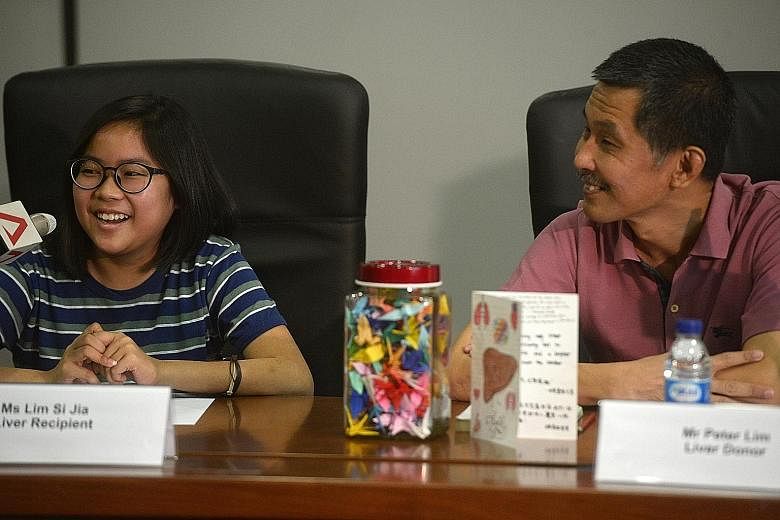It did not come entirely as a surprise when Ms Katherine Chong's third child, Si Jia, was diagnosed with glycogen storage disease eight years ago, when she was eight.
Si Jia's brother, who is two years older, also developed the disorder when he was around the same age. Ms Chong's elder daughter, 21, is the only one of her children who does not have the disease.
"Every parent would be very sad," said Ms Chong, 52, who works in the insurance sector. "But there is a reason for everything, and we had to accept the reality."
The genetic condition is estimated to affect one in every 100,000 people globally. Si Jia, like her brother, would eventually have to get a liver transplant to stay alive. Her brother received a new liver from a brain-dead patient last year.
For Si Jia, now 16, the donor was Mr Lim Kok Seng, 54, who simply wanted to give part of his liver to someone on the national waiting list who needed it the most. It is the first time that a non-directed liver transplant - where the donor does not come forward with a recipient in mind - has taken place in Singapore.
People with glycogen storage disease cannot produce an enzyme that is needed to break down the body's stores of a compound called glycogen. When this happens in the liver, glycogen accumulates and often results in the organ swelling.
As glucose - or blood sugar - is derived from glycogen, people with the disorder often also suffer from low blood sugar levels.
So, Si Jia had to regularly drink a solution of uncooked starch - such as cornstarch mixed with water - before bedtime every night.
While she could attend school like other children, there was still an urgent need for a transplant. At a height of only 1.49m, Si Jia is shorter than the average adult woman here, who is about 1.6m tall.
"If we didn't do a transplant in time, she would remain at her present height throughout her puberty," said Professor Quak Seng Hock, who heads the paediatric gastroenterology, hepatology and nutrition division at the National University Hospital.
A tumour - benign, but which could be potentially cancerous - was also discovered in Si Jia's liver.
Last year, there were a total of 38 liver transplants, 20 of which used livers from dead donors. There were 54 people on the waiting list for a liver transplant last year.
"I'm really grateful to Mr Lim, and I really admire his courage and determination," said Si Jia, who requires lifelong medication to prevent her body from rejecting her new liver.
Mr Lim, a security concierge, said he hopes his altruism will inspire others to do the same. Before the surgery, he had no idea his decision would be such a significant one.
"It never crossed my mind that I would be the first non-directed donor," said the father of two daughters. "For me, it was just a way to save a life and give hope to the next generation... That was my heart's desire."


